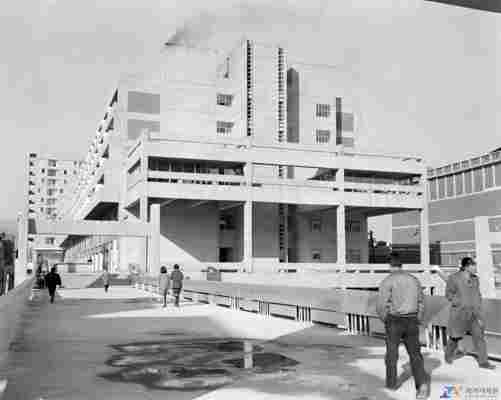During Venice Architecture Biennale, which opens this week, 63 countries the world over convene on the chain of canal-incised islands to survey the state of design as it coincides with development, politics, the economy, and contemporary culture at large. For its part, the Korean Pavilion’s exhibition, “Spectres of the State Avant-garde,” is taking on how architecture and public policy become intertwined.
The titular “spectres” are the ghosts of the Korea Engineering Consultants Corp., or KECC, the architecture and civil engineering consultancy founded by South Korea’s military dictatorship in 1963. (While KECC still exists today, it became a private company in the ’90s.) At its inception, it was an instrument of an autocratic government, whose visions of utopia included rapid industrialization, urban development, an end to poverty, and the violent suppression of free speech through martial law.

Sungwoo Kim of N.E.E.D. Architecture presents "The City of Radical Shift," a proposal that turns the electronics district Sewoon Sangga into a more leisure-friendly public space.
The idea of utopia through oppression is one of the many KECC contradictions that the Korean Pavilion’s artist director Seongtae Park and his team of curators explore in the exhibition, which runs through the duration of the Biennale, May 26 through November 25. Another contradiction: the idea of “state avant-garde.” KECC employed Korea’s top modern architects of the day, funneling their creative potential through the dictatorship’s rigid parameters and propaganda. They designed expressways, master plans, leisure destinations, and more, but sadly, their work was never properly archived. As a consequence, Park says, “their stories remain as a blind spot in the architectural history of Korea.”

"Dream Cells," by architects Jinhong Jeon and Yunhee Choi of BARE (Bureau of Architecture, Research & Environment) imagines the 1967 Guro Industrial Complex with better living conditions than the ones it had offered its migrant workers dreaming of a better life in the past.
What Park presents instead is an archive imagined by contemporary architects, a novelist, and an artist, who’ve taken four sites from the 1960s and reimagined them in service to the people, rather than the state. Their architectural proposals take the form of models and florid illustrations that reckon with a dark history.

Inside the Korean Pavilion at the 2018 Venice Architecture Biennale.
“Its apparition still haunts the architectural imagination in Korea,” says Park, “and the 2018 Korean Pavilion is an attempt to dive into this historical void to meet face-to-face the ghost of KECC. By exorcising its contradictory legacies, we may discover, beneath the ashes of the state avant-garde, clues for building new forms of civic space for the post-developmental and post-national society today.”
RELATED: Mohammed Qutaish’s Future Aleppo Is a Beacon of Hope in the Midst of War
